The Ber is also called Indian jujube (Ziziphus mauritiana). Ber fruit is native to India. The Ber tree is a branched, thorny deciduous tree with a spreading crown, which grows to about 45 feet. It is widely cultivated for its fruits. Fruit production depends on variety, agro-climatic conditions, tree age, and management methods. Let’s check out the top 17 steps to boost Ber Fruit/ Yield/Jujube below.
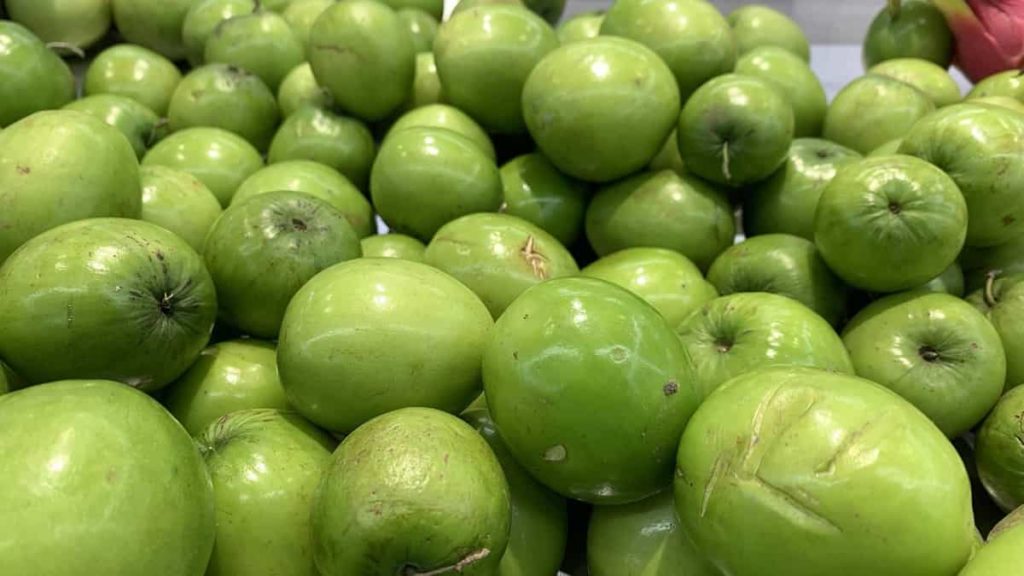
Top 17 steps to boost Ber Fruit/Yield/Jujube
Step 1: Agricultural climate requirements for good Ber growth
Ber grows at altitudes up to 1,000 meters above m.s.l (Mean Sea Level) in different climatic conditions. High air humidity is not suitable for its cultivation. Ber grows on sandy, loamy, saline, and alkaline soils.
Step 2: Soil management for fruit development
In India, the tree works best on sandy loam, neutral or slightly alkaline. It also grows well on lateral, medium loamy soils with good drainage, or deep sandy to sandy looms are best suited for cultivating sandy, gravelly, alluvial. However, good Ber orchards are also found in clay loam and some alkaline soils.
The only requirement is specific irrigation during fruit development, i.e., from November to March. Frost damages fruits but not trees. Fruit yields are higher in more rainy years and lower in less rainy years. Insect infestation is also low. Areas with low rainfall. Ber trees are extremely drought tolerant. Its deep taproot system enables it to survive for a long time.
Step 3: Best Ber varieties for good crop yield
The main Ber varieties cultivated in India are Gola, Umran, Banarasi Karka, Goma Kriti, Mundia, Kaithli, Umran, Mehrun, Parbani, Elaichi and Sanam 5.
Step 4: Propagation method for increasing good crop growth
Ber is grown from seeds and other plant sources. Storing the seeds for more than four months, or staining the seeds, helps in better germination. The seeds need full sunlight for germination. Ber grows in various soils, tolerate extreme temperatures, and thrives in dry conditions. There are several cultivated varieties of Ber in India, so it is difficult to identify the true wild species. Two methods of propagating Ber trees are seed propagation and vegetative propagation.
Seed propagation involves collecting seeds, preparing them, and applying them directly to the soil or compost. This method is straightforward; however, the growth, fruiting, and fruit quality of the grown trees cannot be guaranteed, and the time taken for the trees to reach the age is usually longer than that of trees propagated by plant methods.
In case you missed it: Top 16 Steps to Boost Raspberry Yield: How to Increase Fruit Size, Quality, and Production
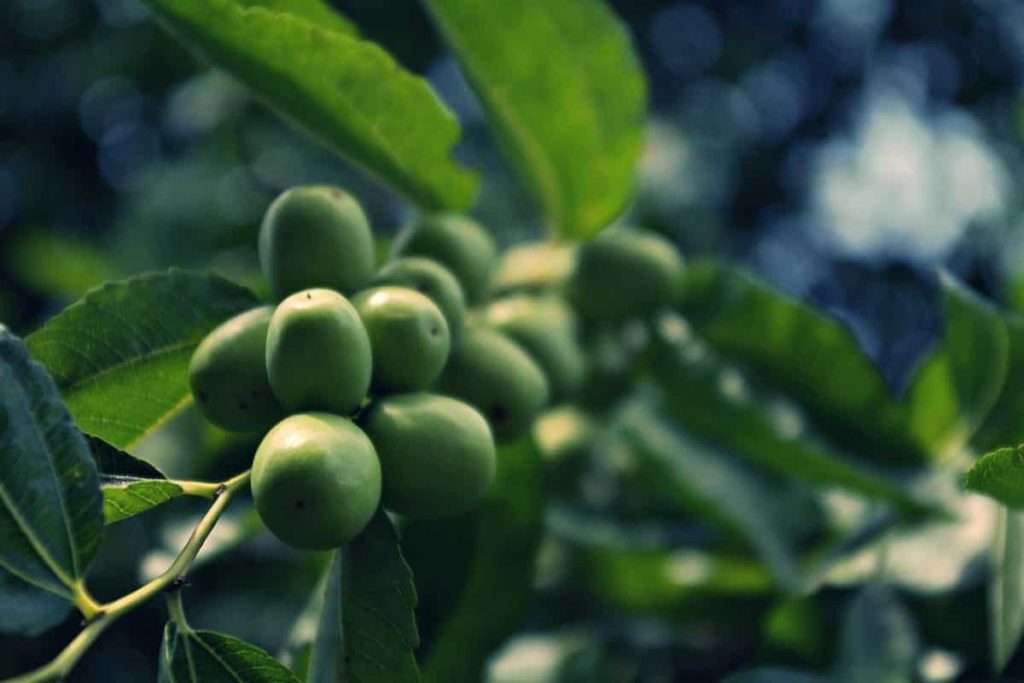
However, seed germination is often used to increase root reserves for plant growth. Therefore, seeds usually propagated Ber in earlier times. But the disadvantage of this seed method is the variability in seed breeding. Therefore, it is recommended to grow high-quality varieties through patch budding.
Vegetative – The most common method of growing Ber is I or T (shield) budding. Rootstock plants are grown by breaking the stone (endo-carp) and sowing the extracted seed kernels. They grow in about a week. Seed stones can be sown in the same way, but germinating takes about a month. Seeds of locally adapted and strong Ber trees can be used to nurture root deposits in the field from July to August, or they can be planted in nurseries for budding. Bidding is done during May-June on the Zizyphus mauritiana rootstock.
Step 5: Planting season and method for high-quality fruits
Planting in Ber is usually done at the beginning of the monsoon. A 60x60x60 cm pit is dug during the summer and refilled after adding two baskets of farmyard manure and 50 grams of heptachlor dust to protect against termites.
Step 6: Spacing for getting quality fruits
Planting is done at a distance of 6 meters. Ber plants can be planted in irrigated areas from January to March.
Step 7: Fruit drop control to increase fruit size
Excessive watering during the flowering period causes the flower to drop in the Ber tree. Irrigation during this time can delay fruit ripening and prolong the ripening period. In addition, water pressure will cause immature fruit to fall. The problem of severe fruit drop in the field is of great concern to the farmers of the field. Premature fruit drop of about 50% of production in ‘Umran’ crop is a significant problem that adversely affects farmers’ production and profit.
The Ber crop bears only 8-9% fruit which can reach full maturity. Ber fruit does not usually drop physically; the drop is generally due to pathological reasons. However, due to environmental humidity and increased plant growth, some Ber may fruit drop in October-November. One spray of 10-20 ppm Naphthalene acetic acid (NAA) will be enough to control fruit drop in mid-October.
Growth regulators are now being used to bring about early and heavy flowering, increase fruit set, prevent fruit drop, increase fruit size, and promote uniform ripening. These methods show that a good crop can bring 2 to 3 times more than the traditional method.
Step 8: Irrigation management for fruit development
Water is life for every plant, so it should be appropriately used to save water. No flooding should occur unless the plants cover the entire provided space. In June, apply the first irrigation after harvesting for hoeing in tree basins and fertilize the field yard. Irrigation should not be done in the rainy season. When there is drought, irrigate after planting. Then irrigate at monthly intervals till February.
Fruits begin to ripen after March, and harvesting is almost complete in April. Irrigation should not be done during and after fruit harvest. Irrigation is also very beneficial during hot weather and fruit development. Water pressure will cause the immature fruit to fall. India has been irrigated 35 times during the winter months. Zinc and boron sprays are sometimes applied to enhance the brightness of the fruit.
Step 9: Nutrition for increases fruit production
A fertilizer dose of 750 grams N/tree gives the highest yield, while 250 grams N and 250 grams P2O5 increase fruit production. Unfortunately, the application of potassium does not give any response in Ber trees. Therefore, Ber needs regular fertilizers and manures for good yields like other fruit trees.
Step 10: Care for young plants
Newly planted plants should be irrigated frequently at 7-10 days intervals depending on the day’s temperature. First, though, sprouts appearing on the trunk below the bud union must be regularly removed with sharp sectors. Protect young plants from insect attack.
In case you missed it: Top 15 Steps to Boost Blueberry Yield: How to Increase Production, Size, and Quality
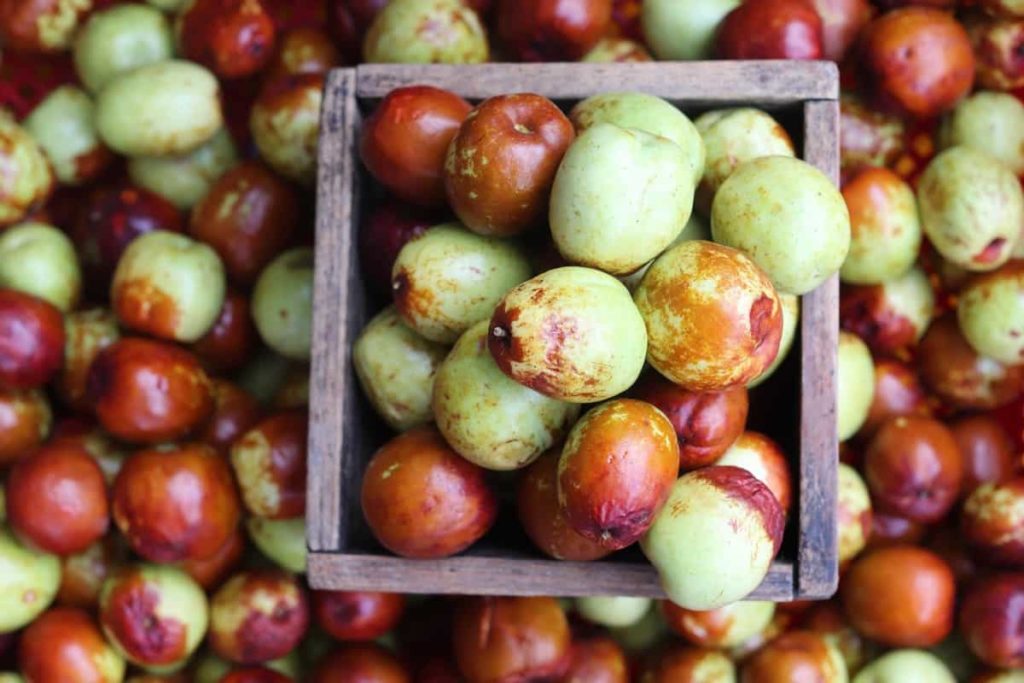
Step 11: Flowers, fruit set, and fruit development conditions
Flowering times vary in India and are affected by climatic conditions. For example, in Maharashtra, Ber flowering occurs in May-June, and fruits ripen in October; in Uttar Pradesh, flowering occurs in September, and fruit ripens in February-April; in Rajasthan, flowering occurs in September-October and fruits ripen in February-April. The flowering period is 50-65 days, depending on the facts and weather conditions.
Varieties vary greatly in fruit set (2-18%). The development of Ber can be divided into three stages. Active growth occurs during the first six weeks and the last eight weeks. Growth is very slow over the middle eight weeks. The fruit grows more in diameter during the last stage and more in length during the first stage.
Step 12: Training and pruning for maximum fruit growth
In the first 2-to-3-year age after planting, the Ber trees are trained to develop a strong framework. Ber tree training is required to develop a strong framework during the first 2-3 years. The tree flourished in the first year, and many side branches sprouted from the main shoots and roots. All secondary branches up to 75 cm above the ground level should be tapped to form a straight main trunk.
3-4 well-located and conveniently located main branches are allowed on the main trunk, and above them, it is to be carried backward. During the second year, these major branches also maintained 3-4 secondary branches. This process continues for the development of Tertiary branches. The main frame of the tree is maintained by removing the water-sprouted shoots (very long shoots without fruit). The framework can be modified at the time of annual harvest.
Annual pruning is necessary to produce a maximum number of new healthy shoots that will bear good quality fruit. Unwanted, weak, intercrossing, diseased, and broken branches are removed from time to time to encourage healthy growth for maximum fruit growth. Pruning is done in the dry season when the tree loses its leaves and enters dormancy. Spraying once every two days with 3% potassium nitrate before pruning induces bud sprouting from a maximum number of nodes.
In case you missed it: Top 20 Steps to Boost Cucumber Yield: How to Increase Cucumber Size, Quality, and Production
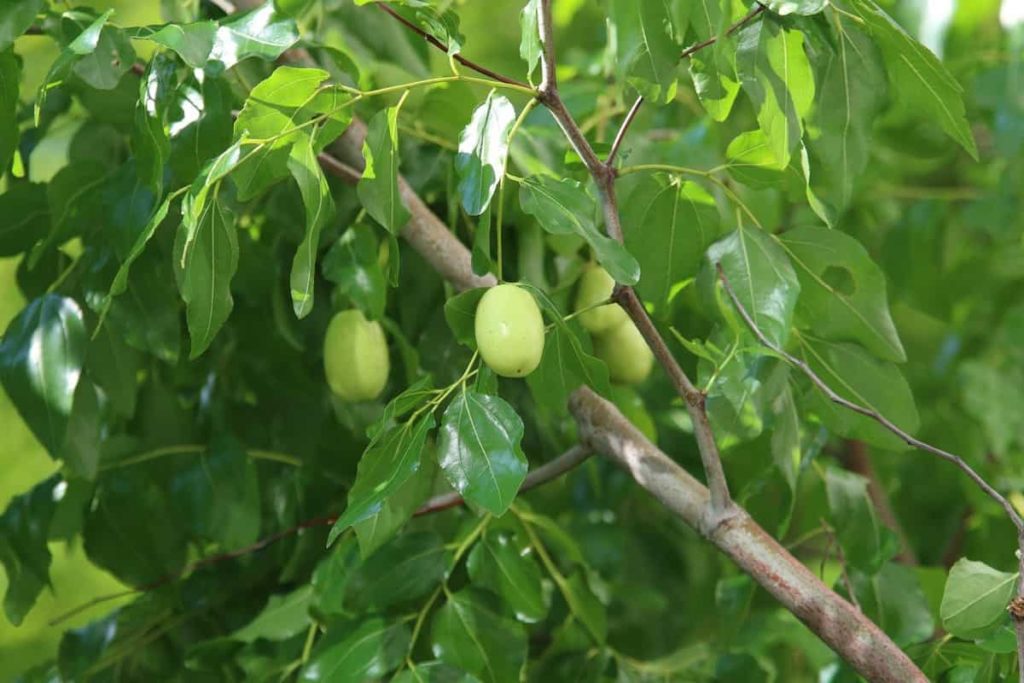
Ber bears on new year’s growth in the axis of leaves. Therefore, regular pruning is essential to achieve maximum growth each year. In addition, pruning improves tree growth and fruit quality. If Ber trees are left uncut for many years, they become unproductive and backward. It has been observed that uncut trees can have 10-meter-long supports and very few leaves and bear fruit only on the tops. Therefore, about 30% of the growth of previous years must be removed.
Step 13: Intercropping for good quality fruits
During the 2 to 3 years of tree age, the plants occupy the minimal area, and most of the land remains vacant. The vacant land should be used wisely while growing compatible crops. No crops should be grown in the Kharif season, so the Ber plants will need to be watered at Ber plants. Grow Rabi crops like Wheat, Gram, Maize, Massar, Barseem, Sarson, etc.
After the first two years, grow only toria or winter vegetables so that the field is empty during March-April for easy harvesting of fruits. Large and long-growing crops like millet or sorghum should not be grown.
Step 14: Weed control for getting more fruits
Perennial weeds such as Baru Grass, Dubh Grass, Parthenium, and Puthkanda raise their heads during tree growth. To check for perennial weeds, spray round-up (glyphosate) by 10ml / liter or Gramoxone by 6ml / liter when the weed grows properly (20-30 cm in height). Gramoxone can also be sprayed into tree basins. Choose a claim day for spray drift to the Ber foliage.
Step 15: Mulching for good tree growth
In Ber trees, black polythene mulch has been useful in protecting soil moisture and tree growth.
Step 16: Plant protection for more plant growth
Fruit Fly – Destroy all infected fruits. To destroy the pupae, dig up the soil under the tree canopy and add 1.3% Lindane dust by 30 grams/tree. Spray Malathion 50 EC or Chlorpyrifos 20 EC or Quinalphos 25 EC 2 ml/liters. Carefully use polythene bags fish meal trap with 5 grams of wet fish meal and 1 ml of Dichlorvos in cotton. Fifty traps per hectare are required; fish meal and cotton soaked in Dichlorvos should be renewed in 20 and 7 days.
In case you missed it: Top 15 Steps to Boost Indian Gooseberry/Amla Yield: How to Increase Fruit Size, Quality, and Production
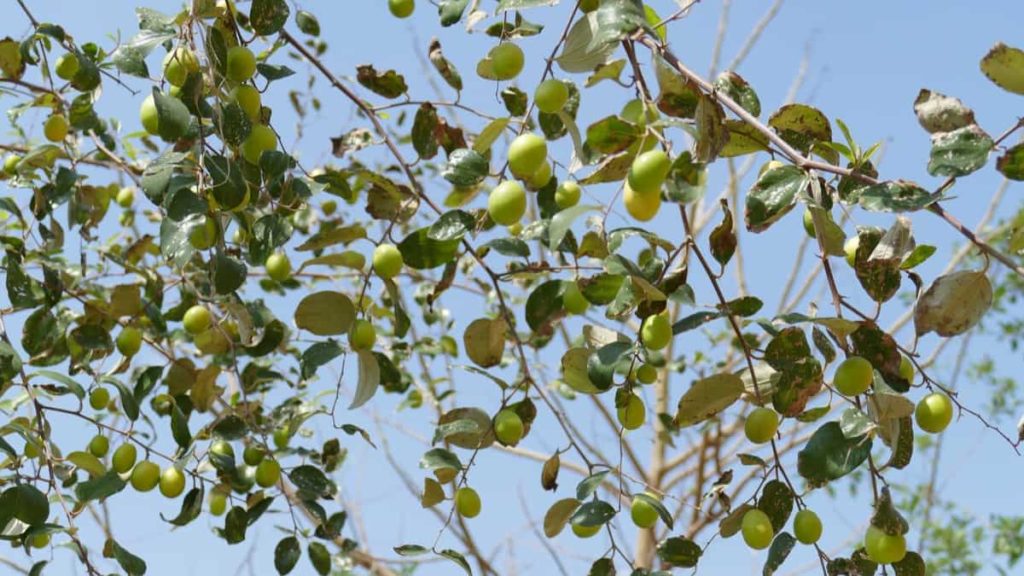
Scale insects – All infected material should be collected and burnt during pruning. Trees should be sprayed with Methyl Demeton 25 EC by 2 ml/liter or Phosphamidon 40 SL.
Hairy caterpillars– Caterpillars feed on leaves in the early stages, and old caterpillars eat fruits and tender shoots. They start eating new plants that emerge after harvest, and this continues through overlapping breeds.
Control measures – Spray with 0.05% methyl parathion.
Leaf chafer beetle – The beetles of light brown color feed on leaves at night. Insects are most active during the monsoon when new growth occurs. In severe cases, the leaves of the whole tree are reduced.
Control – It can be effectively controlled by spraying Endosulphon 500 ml or Malathion 300 ml in 500 liters of water.
Diseases
Leaf black spot – Spray Carbendazim 1 gram/liter or Chlorothalonil 2 grams/liters at 15 days intervals from the initial appearance of symptoms.
Powdery mildew – Spray Dinocap 1 ml per liter to control powdery mildew.
Fruit rot – It is caused by many fungi, namely Phoma sp., and Colletotrichum sp. Alternaria spp and Pestalotia versi chlor. Light brown spots appear on the underside of the fruit and later cover the whole part of the fruit, and they turn dark brown.
Control: Collect and destroy all affected fruits. Spray Mancozeb or Zineb by 0.2% twice in the early stages of infection.
Step 17: Harvesting tips for high productivity
Ber fruits must be harvested at the right time. It can advance our first harvest within 2 to 3 years after planting. Late harvesting can cause the fruit to ripen and affect the taste of the fruit. Ber plants can bear fruit from buds after the first year of planting. However, young plants are trained to produce balanced trees during the first three years, and fruit production is of no importance.
In case you missed it: Growing Strawberries Vertically from Scratch: Methods, Tips, and Ideas
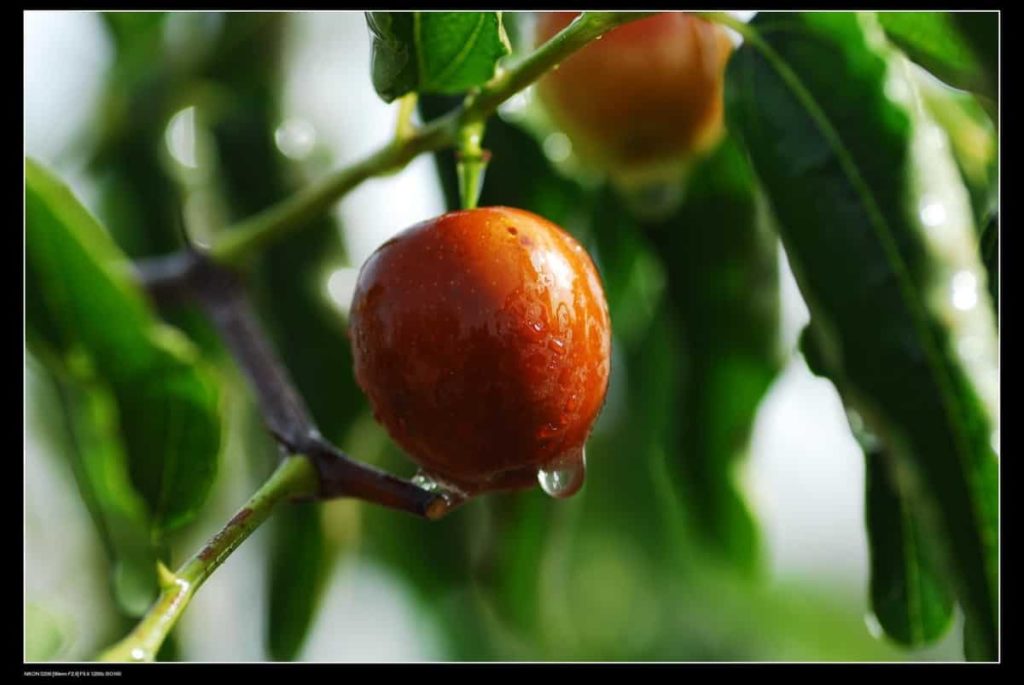
Generally, high productivity reaches 8-10 years of age and lasts for about 40 years in maintenance and management. After that, yield depends on soil and climatic conditions, age, tree type (seedling/grafted), and management methods. Well-planted trees (8 years and above) give about 80 to 200 kg of fruit.
- How to Make Houseplants Bushy: Effective Tips and Ideas
- Innovative Strategies for Boosting Coconut Pollination and Yield
- Pollination Strategies for Maximum Pumpkin Yield
- The Complete Guide to Chicken Fattening: Strategies for Maximum Growth
- Natural Solutions for Tulip Problems: 100% Effective Remedies for Leaf and Bulb-Related Issues
- Revolutionizing Citrus Preservation: Towards a Healthier, Greener Future
- Natural Solutions for Peony Leaf and Flower Problems: 100% Effective Remedies
- Maximizing Profits with Avocado Contract Farming in India: A Comprehensive Guide
- Natural Solutions for Hydrangea Problems: 100% Effective Remedies for Leaf and Flowers
- The Ultimate Guide to Choosing the Perfect Foliage Friend: Bringing Life Indoors
- From Sunlight to Sustainability: 15 Ways to Use Solar Technology in Agriculture
- The Ultimate Guide to Dong Tao Chicken: Exploring from History to Raising
- The Eco-Friendly Makeover: How to Convert Your Unused Swimming Pool into a Fish Pond
- Mastering the Art of Delaware Chicken Farming: Essentials for Healthy Backyard Flocks
- 20 Best Homemade Fertilizers for Money Plant: DIY Recipes and Application Methods
- How to Craft a Comprehensive Free-Range Chicken Farming Business Plan
- Brighten Your Flock: Raising Easter Egger Chickens for Beauty and Bounty
- How to Optimize Your Poultry Egg Farm Business Plan with These Strategies
- Subsidy for Spirulina Cultivation: How Indian Government Schemes Encouraging Spirulina Farmers
- Ultimate Guide to Raising Dominique Chickens: Breeding, Feeding, Egg-Production, and Care
- Mastering the Art of Raising Jersey Giant Chickens: Care, Feeding, and More
- Ultimate Guide to Raising Legbar Chickens: Breeding, Farming Practices, Diet, Egg-Production
- How to Raise Welsummer Chickens: A Comprehensive Guide for Beginners
- How to Protect Indoor Plants in Winter: A Comprehensive Guide
- Ultimate Guide to Grow Bag Gardening: Tips, Tricks, and Planting Ideas for Urban Gardeners
- Guide to Lotus Cultivation: How to Propagate, Plant, Grow, Care, Cost, and Profit
- Agriculture Drone Subsidy Scheme: Government Kisan Subsidy, License, and How to Apply Online
- Ultimate Guide to Raising Araucana Chickens: Breed Profile, Farming Economics, Diet, and Care
- Bringing Hydroponics to Classroom: Importance, Benefits of Learning for School Students
- Ultimate Guide to Raising Polish Chickens: Breed Profile, Farming Economics, Diet, and Care
- Ultimate Guide to Raising Australorp Chickens: Profile, Farming Economics, Egg Production, Diet, and Care
- Silkie Chicken Farming: Raising Practices, Varieties, Egg Production, Diet, and Care
- Sussex Chicken Farming: Raising Practices, Varieties, Egg Production, Diet and Care
- Homemade Feed Formulations for Livestock: Discover Cost-effective Starter to Finisher Feed Recipes
- 20 Best Pig Weight Gain Supplements: Top Swine Weight Gain Formulas
- Ultimate Guide to Elderberry Farming: Propagation, Planting, Yield, Cost, and Profit